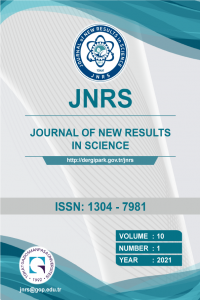Genotype by Environment Interaction of Potato Breeding Lines Developed for Central-Black Sea Region
This study was done as a part of the studies carried out on breeding potato varieties adaptable to central-north intersectional region. This study has been started in 2007, with about 20 thousand hybrid potato seedlings and as a result of clonal selection, 20 clones, performing excellent characteristics in terms of yield and quality characteristics, were subjected to the analysis of stability in terms of genotype x environment interactions. The study was conducted under Tokat-Niksar, Tokat-Kazova (2012-2013) and Tokat-Artova (between 2011-2012 and 2012-2013) conditions as a randomized complete block design with 3 replications in 8 different environments, as the year and location are accepted as an environment. In the study, four commercial varieties were tested as standards beside White, cream, light yellow and dark yellow clones. The data were subjected regression analysis. Based on the Finlay-Wilkinson regression coefficients, some of the clones (A7-12, T5-4, T11-10, T5-14, A3-15, A3-167, and T10-8) which have better yield and quality characteristics than commercial varieties, showed good adaptation to specific environments while the clones (T6-28 and A3-234) had good adaptation to all the environments (Tokat-Niksar, Tokat-Kazova, and Tokat-Artova). Also in terms of dry matter, A13-1 has been identified as a clone with higher (28.4%) dry matter contents.
Keywords:
Potato, Clone Selection, Solanum tuberosum Breeding, Stability,
___
- [1] Becker, H.C., J. Leon, 1988. Stability Analysis in Plant Breeding. Plant Breeding, 101, 1-23, [2] Caesar, K., K.B.A. Bodlaender, C. Hunicken, L. Roer, M. Umaerus, 1978. Physiological Changes of the Potato by Planting Under Different Ecological Conditions. 7th Triennial Conference of the European Association for Potato Research, 26 June-1 July, Warsaw, Poland, s. 51-54. [3] Yılmaz. G., Tuğay. M.E., 1999. Patatesde Çeşit X Çevre Etkileşimleri. II. Çevresel Faktörler Yönünden İrdeleme. Turkish Journal Of Agriculture And Forestry, 23:107-118. [4] FAO,2016. Food and Agriculture Organizition of the United Nations. http://faostat.fao.org/ [5] Er, C., Uranbey, S., 1998. Nişasta Ve Şeker Bitkileri. Ankara Üniv. Ziraat Fak. Yayın No:1504, Ders Kitabı:458, Ankara. Esendal, 1984. [6] Finlay, K.W. and G.N.Wilkinson, 1963. The Analysis of Adaption in a Plant Breeding Progromme, Aust. Jour. Agric. Res. 14: 742-754. [7] Tugay, M.E., Çıtır, A., Yılmaz, G., Çağatay, K., Kara, K., 1995. Tokat Yöresi Ova ve Yayla Koşullarında Tohumluk Patates Üretimi Üzerine Araştırmalar. Tübitak Tovag-950 Nolu Projenin Kesin Sonuç Raporu. Gaziosmanpaşa Üni. Ziraat Fak. Tarla Bitkileri Bölümü, Tokat. [8] Hoopes, R. W. ve Plaisted, R. L., 1987. Potato (Chapter Eleven). Princeples Of Cultivar Development, Volume : 2 (Editor : Walter R. Fehr). [9] Struik, P.C. Ve Wiersema, S.G. 1999. Development of Cultivars (Chapter Three/ Chaprer Nine) Seed Potato Technology. Wageningen Pers, Wageningen. The Netherlands, 1999. [10] Yılmaz, G. Karan, Y.B., 2011 Farklı Alanlarda Üretilen Patates (Solanum tuberosum L) Tohumluklarının Tokat-Artova Şartlarındaki Performansları. Uluslar arası Katılımlı I. Ali Numan Kıraç Tarım Kongresi 27-30 Nisan 2011
- ISSN: 1304-7981
- Yayın Aralığı: 3
- Başlangıç: 2012
- Yayıncı: TOKAT GAZİOSMANPAŞA ÜNİVERSİTESİ
